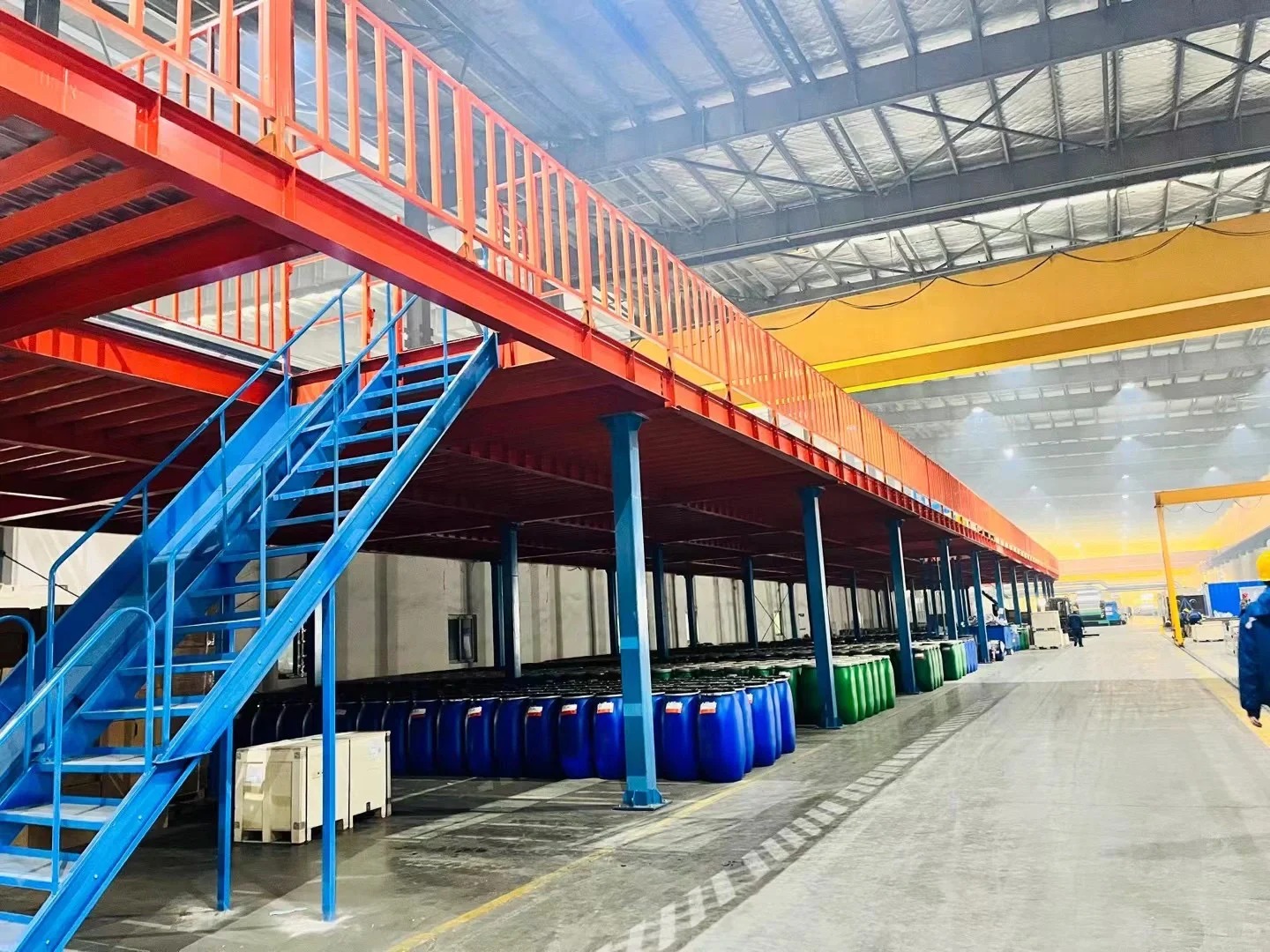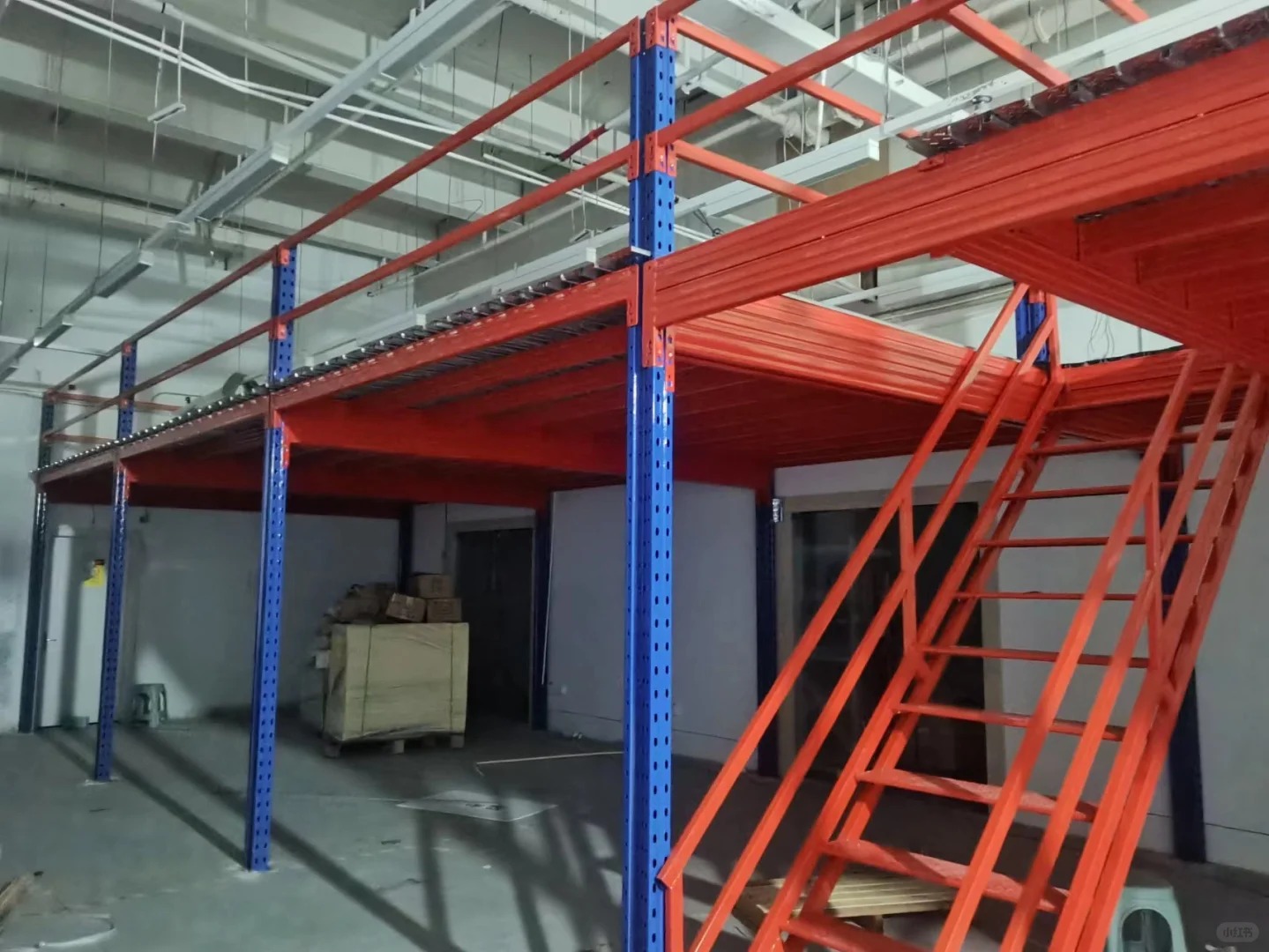n the relentless pursuit of supply chain optimization, the warehouse stands as a critical battleground. Efficient storage isn't just about stacking boxes; it's a sophisticated science directly impacting inventory accessibility, operational speed, safety, and ultimately, the bottom line. At the heart of this efficiency lies the racking systems for warehouses. Choosing the right system isn't a one-size-fits-all decision; it requires careful consideration of inventory profile, operational needs, and facility constraints. This guide delves deep into five crucial aspects of racking systems for warehouses to empower informed decision-making.

1. The Foundational Role: Why Racking Systems for Warehouses are Indispensable
Gone are the days of simply piling goods on the floor. Modern racking systems for warehouses provide the essential skeletal structure that transforms chaotic storage into an organized, high-performing operation. Their importance stems from several core functions:
Maximized Space Utilization: Vertical space is often the most underutilized asset in a warehouse. Racking systems for warehouses leverage height, allowing businesses to store significantly more inventory within the same footprint. Pallet racking, in particular, turns cubic air space into valuable storage real estate.
Enhanced Inventory Accessibility & Visibility: Organized storage means faster picking. Well-designed racking systems for warehouses allow clear visibility of stock and direct access to specific pallets or items (depending on the system type), drastically reducing search and retrieval times. This is vital for fulfilling orders accurately and swiftly.
Improved Safety: Structured storage prevents product collapse, reduces the risk of falling objects, and provides designated pathways for personnel and material handling equipment (MHE) like forklifts. This minimizes accidents, protects valuable inventory, and safeguards workers. Properly installed and maintained racking systems for warehouses are a cornerstone of warehouse safety protocols.
Product Protection: Storing goods directly on the floor exposes them to moisture, dirt, and potential damage from equipment. Racking systems for warehouses elevate inventory off the ground, protecting it from environmental hazards and minimizing handling damage.
Operational Efficiency & Cost Savings: Faster picking, reduced product damage, optimized labor movement, and maximized space all translate directly into lower operational costs and increased throughput. Efficient racking systems for warehouses are a significant driver of warehouse productivity and profitability.
2. Navigating the Options: Major Types of Racking Systems for Warehouses
Selecting the optimal racking systems for warehouses hinges heavily on understanding the diverse types available. Each is engineered for specific inventory characteristics and operational flows:
Selective Pallet Racking: The undisputed workhorse. This is the most common type of racking systems for warehouses. It features upright frames and horizontal load beams creating individual pallet positions accessible from the aisle. Offers direct access to every single pallet (100% selectivity), making it ideal for high-SKU environments with diverse picking requirements. Variations include conventional narrow-aisle (requiring specialized forklifts) and wide-aisle.
Drive-In/Drive-Thru Racking: Designed for high-density storage of large quantities of the same SKU (high volume, low SKU count). Forklifts drive directly into the rack structure to place or retrieve pallets, which are stored on rails on multiple levels. Drive-In is last-in, first-out (LIFO), accessed from one end. Drive-Thru allows first-in, first-out (FIFO), accessed from both ends. Excellent for cold storage or bulk goods but sacrifices selectivity.
Push-Back Racking: A dynamic high-density system operating on a LIFO basis. Pallets are loaded on wheeled carts nested on inclined rails. When a new pallet is loaded, it pushes the existing pallets back. Retrieval works in reverse; removing the front pallet allows the next one to roll forward. Offers better selectivity than Drive-In while still providing high density, suitable for multiple SKUs with medium turnover.
Pallet Flow Racking: A high-density, high-throughput FIFO system utilizing gravity. Pallets are loaded onto an inclined rail system with wheeled rollers at the loading (higher) end. Gravity moves pallets down the lane to the unloading (lower) end. Ideal for high-volume, fast-moving SKUs with expiration dates or requiring strict FIFO rotation (e.g., food, beverage, pharmaceuticals).
Cantilever Racking: Specifically designed for long, bulky, or irregularly shaped items that don't fit standard pallet racking (e.g., lumber, piping, furniture, rolls of carpet, sheet metal). Features vertical columns with horizontal arms extending outwards, providing unobstructed access to the sides of the load. Can be configured as single-sided (against a wall) or double-sided (back-to-back).
Mezzanine Flooring: While not strictly "racking," mezzanines are often integrated with racking systems for warehouses to create multi-level storage or operational space above the main floor, significantly increasing usable square footage without expanding the building footprint. They can support offices, packing stations, or additional racking underneath and on top.

3. Making the Right Choice: Key Factors in Selecting Racking Systems for Warehouses
Choosing the best racking systems for warehouses is a complex decision. Several critical factors must be analyzed:
Inventory Profile: This is paramount.
SKU Count & Variety: High SKU count typically favors selective racking. Low SKU/high volume leans towards dense storage (Drive-In, Push-Back, Flow).
Turnover Velocity (FIFO/LIFO): Fast-moving goods requiring FIFO point strongly towards Flow Racking. Slower moving or non-perishable goods can use LIFO systems like Push-Back or Drive-In.
Load Dimensions & Weight: The physical size and weight of palletized or non-palletized loads dictate beam length, upright frame strength (capacity), and overall rack configuration. Cantilever is essential for long loads.
Product Characteristics: Fragility, expiration dates, and special handling requirements influence system choice and potential accessories like decking or rack guards.
Operational Requirements:
Picking vs. Storage Focus: Is the primary activity retrieving small quantities (picking) or storing/retrieving full pallets? Picking-intensive operations need high selectivity. Pure bulk storage prioritizes density.
Throughput Volume & Speed: High-volume operations may benefit from the speed of Flow Racking or the density of Push-Back/Drive-In.
Building Constraints:
Clear Ceiling Height: This is the absolute limiting factor for vertical storage potential. Taller buildings unlock the benefits of high-bay racking systems for warehouses.
Floor Strength & Condition: The existing slab must support the immense weight of loaded racking and MHE. A structural engineer assessment is often essential.
Column Spacing & Obstructions: Building columns, doors, sprinklers, and HVAC can impact rack layout and aisle widths.
Material Handling Equipment (MHE): The type of forklifts (counterbalance, reach truck, turret truck, order picker) dictates minimum aisle widths required for the chosen racking systems for warehouses. Narrow-aisle racking requires specialized, often more expensive, MHE.
Budget: Initial purchase and installation costs vary significantly between rack types. Consider long-term ROI based on space savings, labor efficiency, and durability. Denser systems often have a higher initial cost but lower cost per pallet position.
4. Beyond Installation: Optimization and Management of Racking Systems for Warehouses
Implementing racking systems for warehouses is just the beginning. Continuous optimization and diligent management are key to sustained performance and safety:
Slotting Optimization: Strategically placing fast-moving SKUs in the most accessible locations (e.g., "golden zone" – waist to shoulder height) minimizes travel time for pickers. Use data (pick frequency, velocity) to regularly review and adjust slotting within your racking systems for warehouses.
Utilizing Vertical Space: Always maximize height within safety regulations and MHE capabilities. Utilize specialized forklifts (like very narrow aisle turret trucks) if ceiling height allows for super-high bay racking.
Implementing Warehouse Management System (WMS) Integration: A modern WMS is crucial. It directs put-away and picking locations within the racking systems for warehouses, optimizes travel paths, provides real-time inventory visibility, and can generate cycle counts, maximizing system efficiency.
Effective Use of Accessories: Enhance the functionality and safety of your racking systems for warehouses:
Wire Mesh Decking: Provides a surface for small items or unstable pallets, improves safety, and allows light and sprinklers to pass.
Row Spacers & Back Guards: Prevent pallets from being pushed through the rack and protect uprights from impact.
Column Protectors/Guard Rails: Shield critical structural components from forklift collisions.
Pallet Supports: Provide additional support for long or unstable loads.
Regular Maintenance & Housekeeping: Keep aisles clear, ensure proper lighting, and promptly address spills or debris. Well-maintained racking systems for warehouses are safer and more efficient.
5. The Paramount Priority: Safety in Racking Systems for Warehouses
Safety must be the overriding concern with racking systems for warehouses. Failure can have catastrophic consequences:
Proper Design & Installation: Systems must be designed by qualified engineers to meet local building codes and seismic requirements (if applicable) and installed strictly according to manufacturer specifications and industry standards (like RMI - Rack Manufacturers Institute in the US). Never modify racks without engineering approval.
Regular Professional Inspections: Schedule comprehensive inspections at least annually by a qualified rack safety inspector, and more frequently in high-traffic or high-impact environments. These inspections look for damage, overloads, misalignment, and compliance.
Daily/Weekly Visual Inspections: Train warehouse staff and supervisors to conduct routine visual checks for obvious damage (bent beams, dented uprights, loose connections, leaning frames) and report issues immediately. Implement a formal reporting procedure.
Strict Adherence to Load Capacities: NEVER exceed the rated load capacities specified for beams, uprights, and connectors. Load capacities should be clearly marked on the rack. Unevenly distributed loads or off-center pallets can also compromise safety. Utilize properly sized pallets.
Forklift Operator Training & Safety: A significant portion of rack damage comes from forklift impacts. Rigorous operator training, certification, and enforcement of safe speeds and operating procedures are non-negotiable. Implement speed limits and use impact monitoring systems where feasible.
Clear Aisles & Signage: Maintain clear, unobstructed aisles. Use clear signage for load capacities, aisle designations, and safety warnings throughout the racking systems for warehouses.
Damage Protocol: Have a clear, enforced protocol for tagging out and immediately repairing or replacing damaged components. Never use damaged racking.
Racking systems for warehouses are far more than just metal structures; they are the fundamental framework upon which warehouse efficiency, safety, and profitability are built. Understanding the diverse types available – from the ubiquitous Selective Pallet Rack to high-density Drive-In and Push-Back systems, specialized Cantilever, and high-throughput Flow Rack – is the first step. Carefully evaluating your unique inventory profile, operational demands, building constraints, and MHE fleet is critical for selecting the optimal solution.
However, the journey doesn't end with installation. Continuous optimization through smart slotting, leveraging vertical space, integrating a WMS, and utilizing accessories maximizes the return on your investment. Most importantly, an unwavering commitment to safety through professional design, meticulous installation, rigorous inspections, strict adherence to load limits, comprehensive operator training, and prompt damage repair is paramount. By strategically selecting, diligently managing, and safely maintaining your racking systems for warehouses, you transform your storage space into a powerful engine driving supply chain success.







